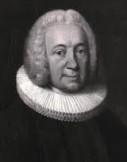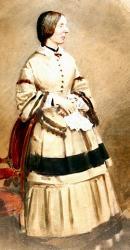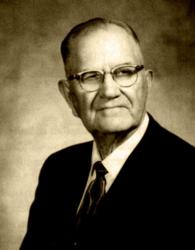Planning worship?
Check out our sister site, ZeteoSearch.org,
for 20+ additional resources related to your search.
- |
User Links
Person Results
Hans Adolf Brorson

1694 - 1764 Person Name: H. A. Brorson Author of "Våga dig Dristelig" in Lutherförbundets Sångbok
Hans Adolf Brorson
Don Hustad

1918 - 2013 Person Name: Donald P. Hustad Composer (descant) of "STILLE NACHT" in The Worshiping Church
Don Hustad
Daniel Hughes
Person Name: D. H. Translator of "Dawel nos, sanctaidd nos (Silent night, holy night)" in Mawl a chân = praise and song
Daniel Hughes
Jane M. Campbell

1817 - 1878 Person Name: Jane Montgomery Campbell Translator (Stanza 4, English) of "Silent Night, Holy Night!" in Glory to God Campbell, Jane Montgomery, daughter of the Rev. A. Montgomery Campbell, born in London, 1817, died at Bovey Tracey, Nov. 15, 1878. Miss Campbell contributed in 1861, a number of translations from the German to the Rev. C. S. Bere's Garland of Songs; or, an English Liederkranz, 1862; and also to his Children’s Choral Book, 1869. The best known and most widely used of these translations is a portion of "Im Anfang war's auf Erden," as the harvest hymn, "We plough the fields and scatter.” Miss Campbell also published A Handbook for Singers, Lond., Society for Promoting Christian Knowledge, n.d. This small work contains the musical exercises which she taught in her father's parish school.
--John Julian, Dictionary of Hymnology (1907)
Jane M. Campbell
Armand Bail
Translator (into French) of "Silent Night, Holy Night (Stille Nacht)" in Voices United
Armand Bail
Horace Clarence Boyer
1935 - 2009 Person Name: Horace Clarence Boyer (b. 1935) Arranger of "[Silent night, holy night]" in Lift Every Voice and Sing II Horace Boyer (b. Winter Park, Flordia, July 28, 1935; d. Amherst, Massachusetts, July 21, 2009) was professor of music at the University of Massachussetts, Amhurst, editor of the African American hymnal Lift Every Voice and Sing, Lift Every Voice and Sing II, and author of How Sweet the Sound: The Golden Age of Gospel (Elliot & Clark, 1995).
Sing! A New Creation
Horace Clarence Boyer
Henrietta Ten Harmsel
Author (st. 2) of "Silent Night! Holy Night!" in Psalter Hymnal (Gray) Henrietta Ten Harmsel (b. Hull, IA, 1921; d. Grand Rapids, MI, March 16, 2012) versified this psalm in 1985 for the Psalter Hymnal. Ten Harmsel attended Calvin College, Grand Rapids, Michigan, and the University of Michigan in Ann Arbor. From 1949 to 1957 she taught English at Western Christian High School in Hull, Iowa, and from 1960 until retirement in 1985 was a member of the English department at Calvin College. Many factors contributed to Ten Harmsel's interest in the psalms. As a child she learned Dutch from her parents, and they instilled in her a love for the Dutch Psalter. Later J. W. Schulte Nordholt, poet, hymnologist, and professor of American history at the University of Leiden, became a great promoter of her interest in Dutch language and literature and her translation work. Ten Harmsel's translations from Dutch include Jacobus Revius: Dutch Metaphysical Poet (1968) and two collections of children's poems: Pink Lemonade (1981) and Good Friday (1984). In 1984 Ten Harmsel was awarded the Martinus Nijhoff translation award.
Bert Polman
Henrietta Ten Harmsel
L. O. Sanderson

1901 - 1992 Person Name: L.O.S. Arranger of "Silent Night, Holy Night!" in Church Gospel Songs and Hymns See also Vana R. Raye (pseudonym).
==================
Lloyd Otis Sanderson was born May 18, 1901 near Jonesboro, Arkansas. His father was a singing teacher. There were a variety of musical instruments in the home, so all of his children learned to sing and play instruments from early in life. He studied and taught music most of early teens and twenties and then began to serve churches for Churches of Christ.
Among Churches of Christ, L.O Sanderson is one of a handful of significant individuals who helped to codify the hymnody of this denomination in the early and mid 20th century. Dozens of his songs remain at the core of this group’s hymnody. As Musical Editor for the Gospel Advocate Company of Nashville during the hymnal heyday of the mid 20th century, Sanderson was responsible not only for the editing of a number of important hymnals, but for helping to shape the church’s song. He composed a number under the pen name of Vana Raye in tribute to his wife. As a composer of both lyrics and music, Sanderson collaborated with a number of individuals, the most notable being his friend, Thomas O. Chisholm, with whom he wrote “Be With Me, Lord,” perhaps his most popular hymn.
Dianne Shapiro, from Sanderson's autobiography (http://www.therestorationmovement.com/_states/tennessee/sanderson.htm) and D. J. Bulls
L. O. Sanderson
Michael Haydn

1737 - 1806 Composer of "[Silent night! Holy night!]" in Christmas Carols and Hymns Johann Michael Haydn Austria 1737-1806. Born at Rohrau, Austria, the son of a wheelwright and town mayor (a very religious man who also played the harp and was a great influence on his sons' religious thinking), and the younger brother of Franz Joseph Haydn, he became a choirboy in his youth at the Cathedral of St. Stephen in Vienna, as did his brother, Joseph, an exceptional singer. For that reason boys both were taken into the church choir. Michael was a brighter student than Joseph, but was expelled from music school when his voice broke at age 17. The brothers remained close all their lives, and Joseph regarded Michael's religious works superior to his own. Michael played harpsichord, violin, and organ, earning a precarious living as a freelance musician in his early years. In 1757 he became kapellmeister to Archbishop, Sigismund of Grosswardein, in Hungary, and in 1762 concertmaster to Archbishop, Hieronymous of Salzburg, where he remained the rest of his life (over 40 years), also assuming the duties of organist at the Church of St. Peter in Salzburg, presided over by the Benedictines. He also taught violin at the court. He married the court singer, Maria Magdalena Lipp in 1768, daughter of the cathedral choir-master, who was a very pious women, and had such an affect on her husband, trending his inertia and slothfulness into wonderful activity. They had one daughter, Aloysia Josepha, in 1770, but she died within a year. He succeeded Wolfgang Amadeus Mozart, an intimate friend, as cathedral organist in 1781. He also taught music to Carl Maria von Weber. His musical reputation was not recognized fully until after World War II. He was a prolific composer of music, considered better than his well-known brother at composing religious works. He produced some 43 symphonies,12 concertos, 21 serenades, 6 quintets, 19 quartets, 10 trio sonatas, 4 due sonatas, 2 solo sonatas, 19 keyboard compositions, 3 ballets, 15 collections of minuets (English and German dances), 15 marches and miscellaneous secular music. He is best known for his religious works (well over 400 pieces), which include 47 antiphons, 5 cantatas, 65 canticles, 130 graduals, 16 hymns, 47 masses, 7 motets, 65 offertories, 7 oratorios, 19 Psalms settings, 2 requiems, and 42 other compositions. He also composed 253 secular vocals of various types. He did not like seeing his works in print, and kept most in manuscript form. He never compiled or cataloged his works, but others did it later, after his death. Lothar Perger catalogued his orchestral works in 1807 and Nikolaus Lang did a biographical sketch in 1808. In 1815 Anton Maria Klafsky cataloged his sacred music. More complete cataloging has been done in the 1980s and 1990s by Charles H Sherman and T Donley Thomas. Several of Michael Haydn's works influenced Mozart. Haydn died at Salzburg, Austria.
John Perry
Michael Haydn


 My Starred Hymns
My Starred Hymns


